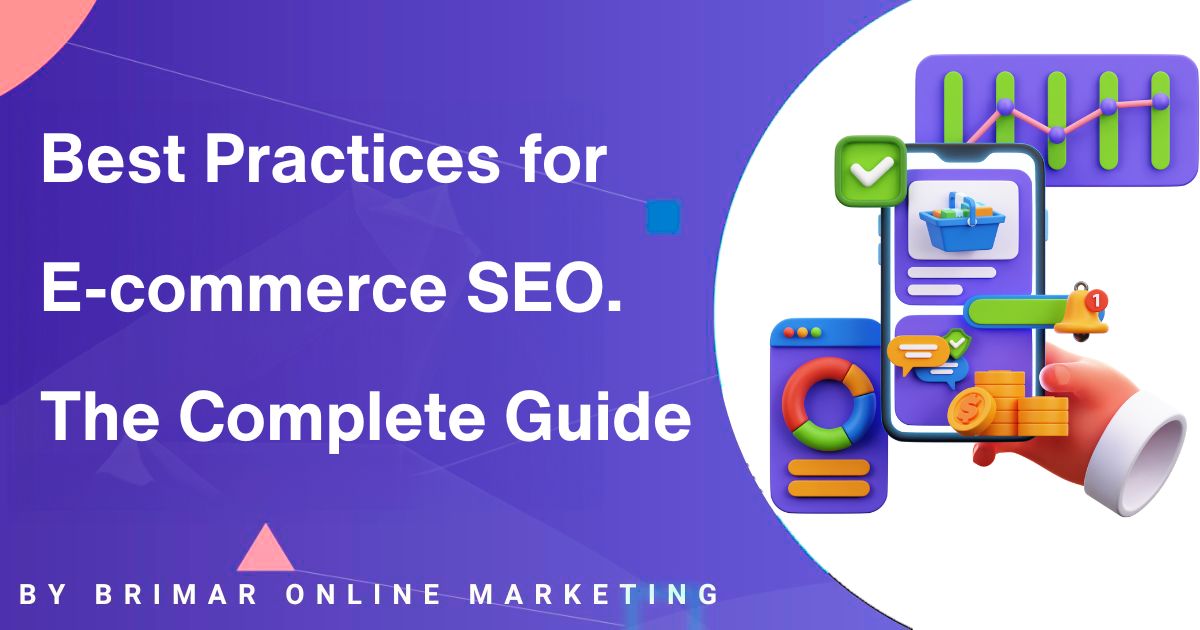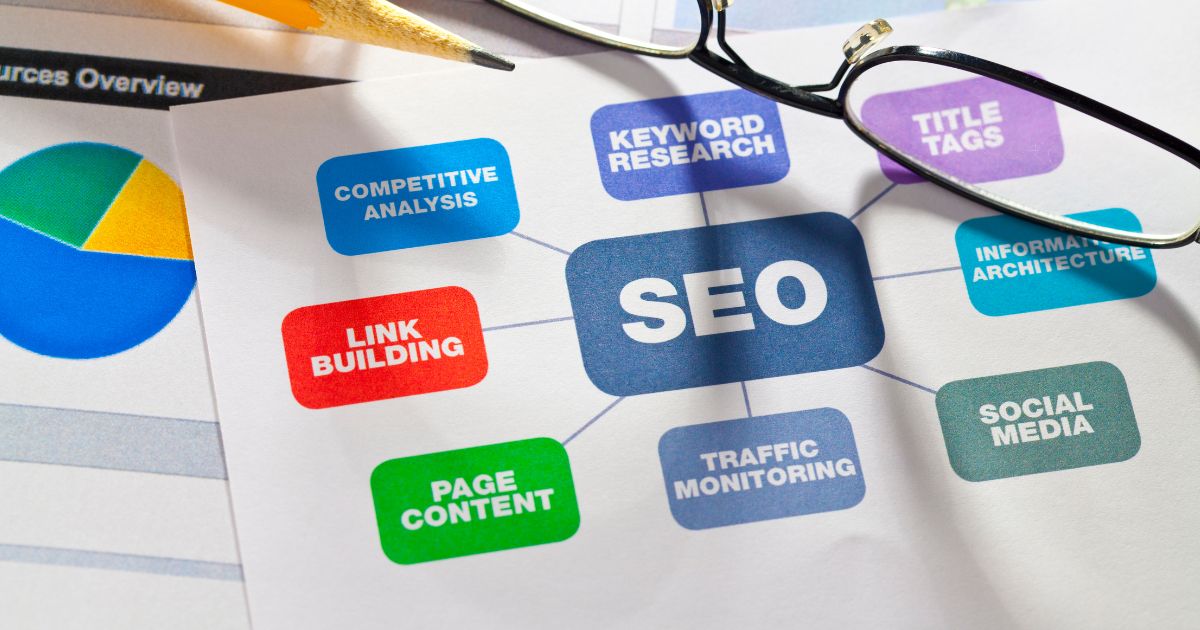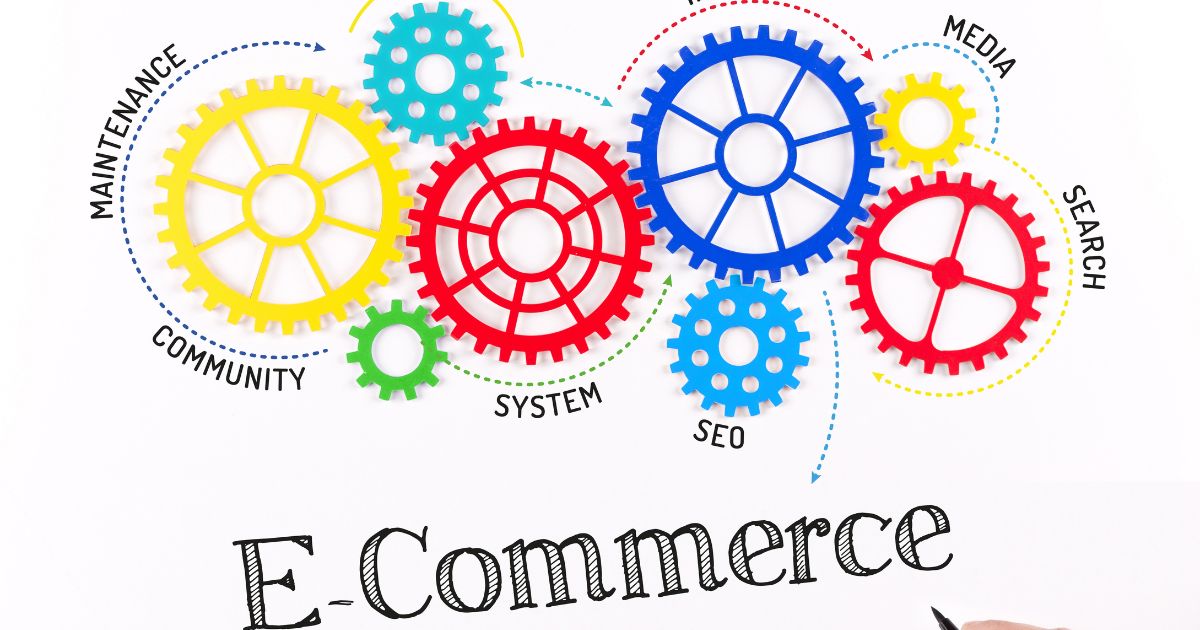
Running an online store can be challenging, especially with all the competition.
But here’s the good news: mastering e-commerce SEO (search engine optimization) can make a massive difference in your website’s visibility and sales.
Think of SEO as the roadmap that helps search engines find and rank your site higher, which means more potential customers discovering your products.
This guide aims to share some of the best practices for e-commerce SEO.
We’ll cover everything from optimizing product pages to improving your website’s overall user experience.
So, whether you’re just starting or looking to refine your strategy, these tips can help you drive more organic traffic and, most importantly, boost sales.
Understanding the Basics of E-commerce SEO
E-commerce SEO ensures your online store shows up when people search for your products.
It’s not just about throwing in a few keywords here and there; it’s about aligning your SEO efforts with what search engines value most: user-focused and relevant content.
This can improve search engine rankings and a steady flow of organic traffic to your site.
The key idea is simple: make it easy for search engines to understand what your pages are about and why they’re valuable.
This involves optimizing your product titles, descriptions, category pages, and every corner of your e-commerce website.
From using relevant keywords to improving your site’s structure, a well-executed e-commerce SEO strategy can help your pages rank higher and reach more of your target audience.
After all, the more visible you are in search results, the more chances you have of driving sales.
Start Attracting Customers Through SEO Today!
We can help you attract new customers through Tailored Search Engine Optimization Strategies for Your Business.
Conducting Effective Keyword Research
Regarding e-commerce SEO, keyword research is like finding the secret path that leads straight to your target audience.
Your goal is to understand what your potential customers are searching for and align your content with those search terms.
This starts with using reliable keyword research tools like Google Keyword Planner.
It’s a great way to discover relevant keywords with a high search volume and is achievable with low keyword difficulty.
Begin by brainstorming keyword ideas related to your products or industry.
Consider what your customers might type into a search bar when looking for your products.
Once you have a list, Google Keyword Planner can help refine it by showing search volume, competition level, and related keywords.
Focus on including long-tail keywords; these are specific phrases with lower competition that more accurately reflect user intent.
For instance, instead of just “running shoes,” try “affordable running shoes for beginners.”
But it doesn’t stop there.
You also want to match these keywords with relevant product titles and detailed descriptions that address customer needs.
For example, if your product is a vegan leather wallet, your title should include that specific phrase, while the description should highlight what makes it unique.
When you align keywords with user intent, you’re more likely to appear in search results and attract the right shoppers.
Optimizing Product Pages for Higher Rankings
Your product pages are your e-commerce website’s backbone, so optimizing them can make a huge difference in your search engine rankings.
One of the first steps is to focus on your main keywords and related terms.
Think of these keywords as signals to both search engines and users about what your page is all about.
Start with your product titles.
Keep them clear, descriptive, and keyword-focused.
For example, instead of a generic title like “Summer Jacket,” use something more specific like “Lightweight Summer Jacket with UV Protection.”
Not only does this help with SEO, but it also gives potential buyers a better idea of what you’re offering.
Next, you have meta titles and meta descriptions.
These are like the front window display of your online store; they need to be inviting.
Use your primary keywords and include a compelling call to action or unique feature to increase click-through rates.
Another key element is the product description.
This isn’t just a space for random text; you can sell your product through relevant content.
Write detailed descriptions that include your target keywords and provide valuable information.
Answer questions like, “What problem does this product solve?” or “What makes it different?”
And remember, unique content is crucial.
Copying descriptions from manufacturers or other sites can not only hurt your SEO but also fail to create a connection with potential buyers.
High-quality images also play a role in optimization.
Use clear, professional photos, and add descriptive alt text to each one.
This small step helps your images rank in search results and improves accessibility for all users.
By optimizing your product pages with these best practices, you’re giving your e-commerce store a solid foundation for driving organic traffic and increasing sales.
It’s about making your pages search-friendly and user-friendly, leading to better results for your business.
Enhancing Category and Collection Pages
Your category and collection pages play a key role in organizing your e-commerce store and helping customers find what they’re looking for.
But it’s not just about organization; it’s about boosting your rankings on search engines, too.
Here’s where intelligent optimization comes into play.
Start by using related keywords that align with what customers are searching for.
Think of your category pages as the gateway to all your products naturally; they should match the search intent of your potential customers.
For example, if you’re selling hiking gear, having precise and targeted category titles like “Men’s Hiking Boots” or “Lightweight Camping Tents” can do wonders for your visibility.
Integrating related keywords in titles, descriptions, and headers (like H1 and H2 tags) is a great way to improve search engine rankings while keeping things simple.
Internal linking is another ace in the hole.
Connecting category pages to related products and blog posts within your site helps with navigation and signals to search engines that your site is well-organized and relevant.
Think of it as building a web of content that naturally leads users more profoundly into your online store.
For instance, linking from a category page for “Women’s Running Shoes” to a guide on “Choosing the Right Running Shoe” helps customers and enhances your site’s overall SEO value.
Improving Site Structure and URL Optimization
A well-structured e-commerce site is like a well-planned store layout; it helps customers find what they need without frustration.
And when customers are happy, so are search engines.
Site structure matters because it guides users and search engines through your content.
You want your e-commerce website to have a clear hierarchy: your homepage leads to main categories, subcategories, and individual product pages.
This logical flow makes it easy for search engines to crawl your site and index pages correctly, which boosts your search engine rankings.
When it comes to URLs, simplicity is the name of the game.
Clean and concise URLs that reflect the page’s content are a good idea.
For instance, use URLs like yourstore.com/mens-hiking-boots instead of yourstore.com/category123?productID=456; this looks better and improves SEO.
A clean URL structure enhances user experience by making navigation intuitive and easy to follow.
Internal links are your hidden gems here.
Strategically placing them throughout your content can help guide visitors toward relevant products, encourage exploration, and spread SEO value across your site.
For example, linking a blog post about “Best Gear for Winter Hikes” to specific winter hiking products or a “Cold-Weather Essentials” collection page can increase engagement and conversions.
It’s all about creating a seamless journey for your audience and boosting your search rankings.
When these elements, site structure, URL optimization, and internal linking, are well-executed, your e-commerce site not only becomes more accessible to navigate but also more attractive to search engines.
This results in better visibility, more traffic, and, ultimately, more sales.
And who doesn’t want that?
Utilizing On-Page SEO Techniques

When it comes to on-page SEO, it’s all about fine-tuning the small details that can make a big difference in your e-commerce store’s visibility.
A solid on-page strategy isn’t just about throwing keywords into your content; it’s about creating a seamless connection between what your audience is looking for and what you’re offering.
Here’s how to make it work:
Strategic Use of Title Tags and Header Tags
Title tags are like the welcome sign for your webpage.
They need to be enticing and include your main keyword.
Think of them as the first impression on search engines and potential customers.
A good practice is keeping your title tags between 50 and 60 characters, ensuring they contain the main keyword and hint about the page’s offers.
On the other hand, header tags (like H1, H2, H3, etc.) are the roadmap of your page’s content.
These help search engines understand the structure of your content and provide readers with a logical flow.
Start with an H1 tag that’s precise and includes your main keyword, and follow it up with subheadings (H2, H3) that naturally fit related keywords or variations.
This makes your content easy to read and boosts your on-page SEO game.
Optimizing Page Titles to Match Search Terms
Your page titles should be more than just labels; they’re gateways to your content.
Optimize them by matching the typical search terms your audience is using.
For instance, if potential customers search for “affordable wireless headphones,” which you sell, ensure your page title speaks their language.
This alignment improves the likelihood of your page appearing higher in search results and increases brand awareness without being too salesy.
Relevant Keywords Throughout the Content
Sprinkle relevant keywords naturally throughout your content.
Overstuffing your content with keywords is a thing of the past, but strategically placing them in the right places, like the first paragraph, headings, and image alt texts, can work wonders for your search engine rankings.
The goal is to keep it informative yet focused, making sure you’re hitting those crucial terms without making it sound robotic or forced.
Technical SEO for E-commerce Websites
Technical SEO is like the backstage crew of your e-commerce site.
Even if your pages look great and the content is spot on, technical issues can keep your site from performing well in search engine results.
Here’s what to focus on:
Site Speed and Mobile Responsiveness
First off, let’s talk about speed.
Nobody likes a slow-loading website, not your visitors, not Google.
If your pages are taking too long to load, people will bounce, and search engines will take note.
To improve site speed, consider optimizing your images, compressing files, and using browser caching.
And remember, a speedy site on desktop doesn’t always mean it’s fast on mobile.
Mobile responsiveness is non-negotiable.
Ensure your e-commerce site works seamlessly on mobile devices because that’s where a large chunk of your audience is browsing and buying.
Fixing Technical Issues and Using Google Search Console
If you ignore technical SEO issues, it’s like having a leaky faucet that’s wasting water drop by drop.
Even minor technical problems can harm your search engine rankings.
Broken links, missing alt texts, or duplicate content can all negatively impact your site’s performance.
Tools like Google Search Console are a lifesaver here.
They help you spot these problems early and fix them before they become more significant.
Consider it a routine health check for your website.
Leveraging Schema Markup and Rich Snippets
Schema markup might sound technical, but it’s one of the best ways to help search engines understand your pages’ content.
By adding schema, you provide context about your products, reviews, pricing, and more.
The result?
Your site can qualify for rich snippets, like star ratings or FAQs, making your e-commerce site stand out in search results.
It’s a great way to grab attention and boost your click-through rate, even if you’re not at the top of the search rankings.
In short, technical SEO is about making sure your e-commerce website runs like a well-oiled machine.
Addressing site speed, responsiveness, technical issues, and utilizing schema markup can give your site the edge it needs to climb the search rankings and deliver a better experience for your customers.
Building High-Quality Backlinks for E-commerce Sites
When ranking your e-commerce site, building high-quality backlinks is like having other websites vouch for your credibility.
Think of backlinks as endorsements from trustworthy sites, which signal to search engines that your content is valuable and worth recommending.
However, not all backlinks are created equal; quality always trumps quantity.
That means aiming for links from authoritative websites in your niche.
Start by collaborating with reputable blogs or industry websites that align with your e-commerce business.
Reach out to influencers or thought leaders in your industry and offer valuable content, such as guest posts or detailed product reviews, that their audience would love.
If you’re launching a new product or running a promotion, create buzz on social media platforms, and don’t be shy about pitching your products to journalists or bloggers who might cover them.
Also, consider joining industry-specific directories or contributing insights to forums or community sites related to your niche.
Just remember, link building isn’t a one-time thing; it’s an ongoing effort that strengthens your website’s credibility over time.
Optimizing for Mobile Devices and Improving User Experience

With more people shopping on their phones, making sure your e-commerce site is mobile-friendly is necessary.
Your website should load quickly and smoothly, and every page should be easy to navigate, whether on a smartphone or a tablet.
No one likes pinching and zooming to read product descriptions or clicking tiny links that lead to the wrong page!
Optimize for mobile devices by using responsive design so your site adapts perfectly to different screen sizes.
Test every product page to ensure buttons are easy to click, images load quickly, and text is legible.
Streamline your checkout process.
Long forms and complicated steps can lead to abandoned carts.
Simplify it to the essentials, and consider adding options like guest checkout or payment integrations with popular mobile wallets.
But there’s more to user experience than just being mobile-friendly.
Improving user experience means understanding your customers’ journey and eliminating any friction.
Think about fast-loading pages, clear calls-to-action, and a visually appealing design consistent with your brand.
And don’t forget accessibility; consider everyone, including those with disabilities, so that they can navigate your site seamlessly, too.
By optimizing for mobile and improving the overall user experience, you’re catering to today’s online shoppers, boosting your conversion rate, and keeping visitors coming back for more.
Creating Quality Content to Drive Traffic
Creating high-quality content is like opening up new opportunities for your e-commerce site.
Blog posts, in particular, play a significant role in attracting visitors and nurturing brand awareness.
When you consistently publish relevant content, it shows your audience that you understand their needs and interests.
This isn’t just about stuffing articles with keywords; it’s about genuinely connecting with potential customers.
One great way to start is by addressing common questions, pain points, or interests your target audience has.
For example, writing blog posts about sustainable living tips or product comparisons can drive more organic traffic to your website if you sell eco-friendly products.
Well-crafted content naturally boosts your search engine rankings and positions you as a go-to resource in your niche.
Content creation shouldn’t be a one-and-done task.
It’s an ongoing process, much like nurturing a garden.
You’ll want to update old blog posts with new information and insights or create fresh content that showcases your latest products and collections.
Highlighting new products in detailed blog posts builds curiosity and helps with cross-promotions by suggesting related products your audience might love.
And remember, variety is key!
Mix up the format of your content with how-to guides, product comparisons, and user stories to keep your readers engaged and coming back for more.
This approach ensures that your content is a magnet for organic traffic, boosting your brand’s visibility and strengthening customer loyalty.
Leveraging SEO Tools for E-commerce Success

SEO can feel like navigating a maze, but with the right tools in your pocket, it’s more like having a map.
Powerful tools like Google Search Console, Google Keyword Planner, and other keyword research tools are crucial in fine-tuning your SEO strategy and helping you reach your goals.
Take Google Search Console, for example.
It’s like having direct feedback from Google itself.
You can see your pages’ performance, monitor your site’s health, and quickly spot any technical issues affecting your search rankings.
This tool’s insights can help you adjust your strategy, fix errors, and improve your site’s visibility.
Then there’s Google Keyword Planner, a fantastic keyword research tool.
It gives you an inside scoop on what your audience is searching for, helping you find target keywords with high search volume and low competition.
This way, you can focus on creating content that matches those search terms and hits the sweet spot between relevance and opportunity.
Other SEO tools offer even more insights.
Some can help you analyze your competitors, identify backlink opportunities, or track your rankings over time.
The key is to use these tools not just for insights but as a guide for refining your SEO efforts.
It’s all about staying informed, tracking your ongoing progress, and making data-driven tweaks to keep climbing the rankings.
Leveraging these tools is a great way to stay on top of your e-commerce SEO game.
You’ll have a clear path for boosting your organic traffic, improving your site’s performance, and staying ahead of the competition.
Measuring and Refining Your E-commerce SEO Strategy
When it comes to e-commerce SEO, what gets measured gets improved.
Regularly checking your search rankings and keeping an eye on search engine results are key steps in knowing where you stand.
It’s not enough to set things up and let them run.
Search engine optimization is a living process; it needs attention and fine-tuning.
Start by consistently monitoring your organic search performance.
Track your target keywords’ performance and see if your web pages attract the right audience.
SEO tools like Google Search Console give insights into which search terms bring in traffic and where improvements are needed.
Your product descriptions need a refresh, or internal linking can help boost underperforming pages.
Remember, the competition isn’t sleeping.
To stay competitive, regularly update your e-commerce SEO strategy based on the insights you gather.
Minor tweaks to your meta titles, product titles, or new content additions can make a big difference.
Keep refining based on real-time data, and you’ll stay ahead of the game.
Conclusion
E-commerce SEO isn’t a set-it-and-forget-it task; it’s an ongoing process.
Each step plays a crucial role in your site’s success, from optimizing your product pages and refining your site structure to building quality backlinks and enhancing user experience.
Focusing on search engine optimization improves your site’s visibility and builds brand awareness and credibility with potential customers.
A robust e-commerce SEO strategy can help you achieve higher search rankings, increase organic traffic, and drive more sales.
It’s about creating a seamless experience for visitors, providing relevant content, and making your site easy to navigate on all devices.
But let’s face it: SEO can be overwhelming and time-consuming.
That’s where Brimar Online Marketing comes in.
We’re here to simplify SEO so you can focus on what you do best: running your business.
Let’s chat if you’re looking for a partner to boost your e-commerce site’s traffic and sales!
Reach out to Brimar Online Marketing today, and let’s get your e-commerce store to the top of search results.
Our SEO Services Have Helped Our Clients Increase Their Revenue!
“I highly recommend Brimar if your looking to grow your online business. You will be satisfied with the high level of expertise and high quality of services. It has helped my business grow by leaps and bounds.”
CEO

